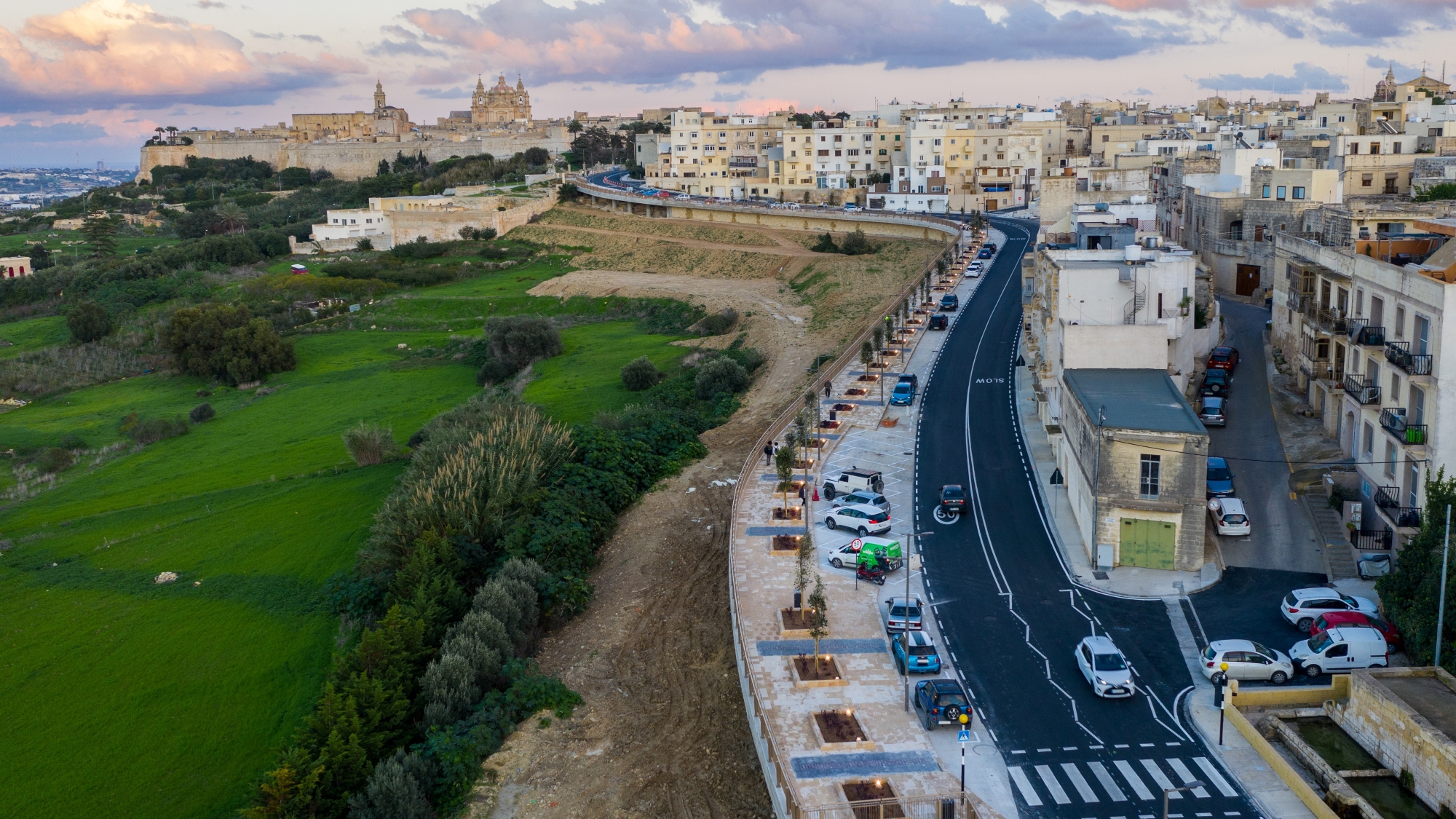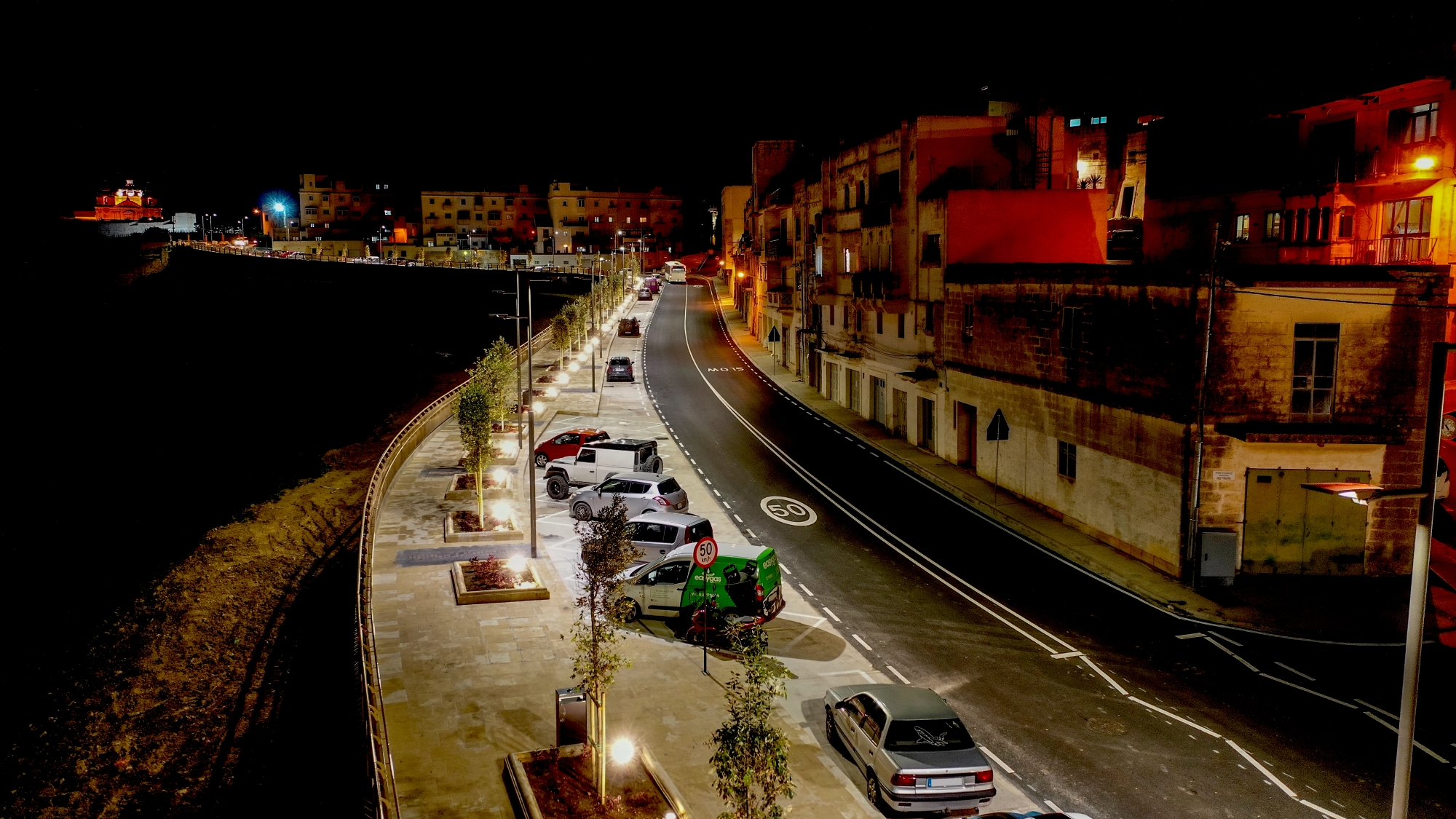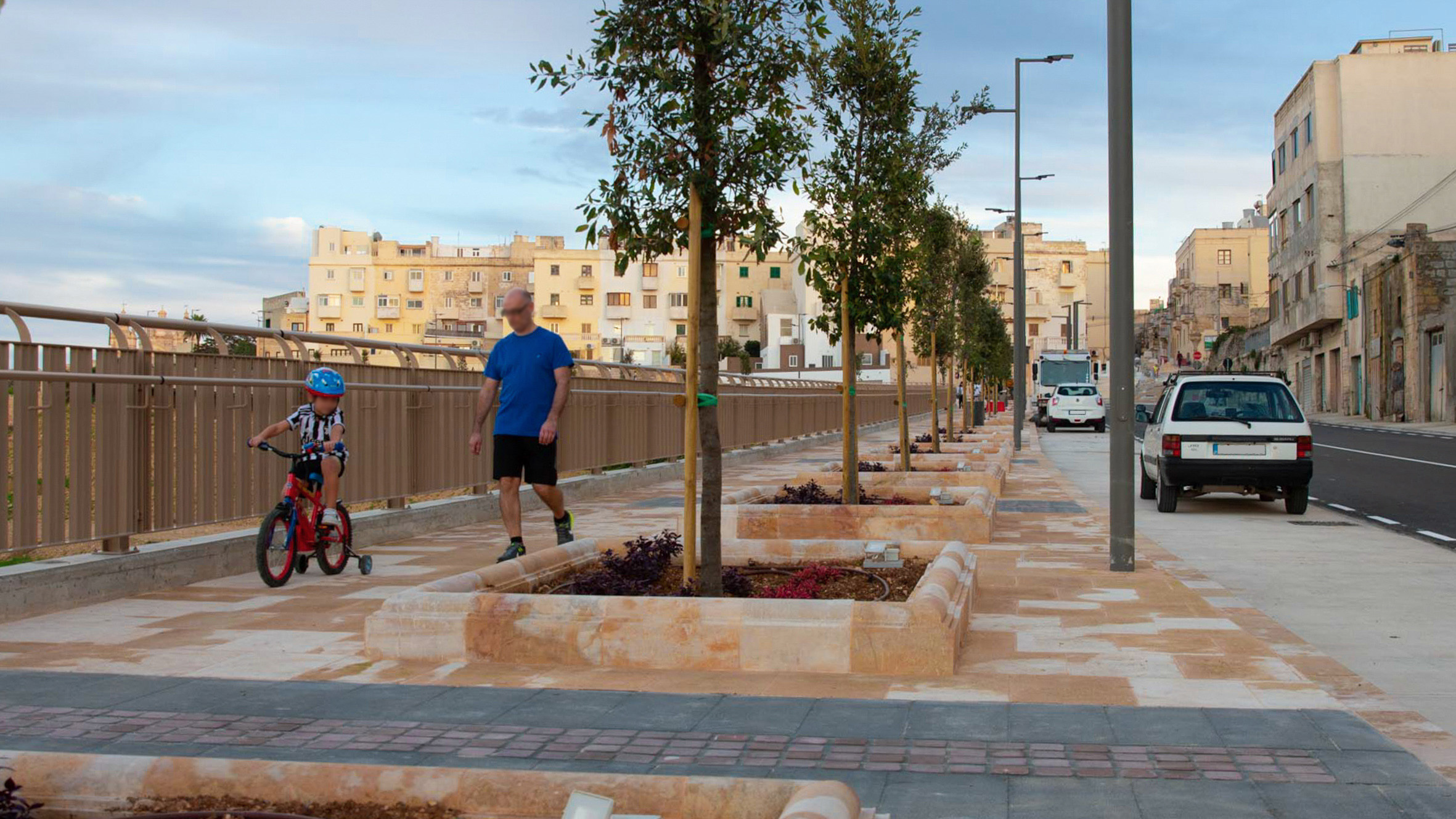
Completing the Gheriexem Road Promenade
Infrastructure Malta completed the rebuilding of Gheriexem Road and the construction of its new promenade overlooking Gheriexem Valley, creating a safer pedestrian route between Mdina, Rabat and Mtarfa.
This €4 million project included the reconstruction of the road on stronger foundations to end years of subsidence damage, as well as a new promenade with safer footpaths and crossings in a road that previously had no infrastructure for pedestrians. The road now also includes additional parking spaces, an electric car charging station, Malta’s first solar footpaths, decorative lighting, benches, and a row of embedded planters with 40 new trees and other plants.
For decades, residents in this area have been calling on the authorities to stop the gradual sinking of Gheriexem Road, which was causing extensive damages to their residences, some of which were in danger of collapsing. As the road continued to deteriorate, Infrastructure Malta stepped in to start its reconstruction in July 2020. The architectural plans were prepared by the Ministry for Transport, Infrastructure and Capital Projects’ Works and Infrastructure Department, in consultation with the environmental and archaeological authorities, to minimise adverse impacts on adjacent fields and to conserve the area’s rich archaeological potential.

Geotechnical investigations during the planning of this project confirmed that this road was built on layers of weak, fractured rock and clay. Its old retaining rubble wall was cracked and irregularly distorted, because it was being pushed outwards by the movement of the unstable infill materials beneath the road. As the underlying layers subsided, the road’s underground networks were damaged as well, causing water and sewage leaks that exacerbated the problem.
Infrastructure Malta built the new road and its promenade on 370 steel-reinforced concrete piles embedded three to five storeys into the ground. Two rows of piles are located beneath the road’s outer retaining structure, which also incorporates the promenade’s cantilevered footpath. The agency’s contractors cast the third row of piles along the other side of the road, where buildings were gradually sinking into the ground with the road’s subsidence.
Archaeologists approved by the Superintendence of Cultural Heritage supervised all the project’s excavation works. Infrastructure Malta modified the road structure’s design to preserve several remains of potential archaeological importance uncovered during the works, keeping them accessible for future studies beneath the promenade.
Within the road’s new retaining structure, there’s a walk-through culvert for new high voltage electricity cables that will improve the area’s electricity services. Infrastructure Malta used 260 precast U-shaped elements to form this 600-metre underground tunnel. By making the cables more accessible, this tunnel will reduce the risk of having to dig up the new road for future repairs or upgrades. The project also included a new sewer, new stormwater catchments as well as potable water pipelines and cable ducts for improved internet and other telecommunication services in this area of Rabat.

This month Infrastructure Malta completed the finishes of the new promenade, including railings, hardstone paving, decorative kerbs, landscaping and irrigation systems, lighting, and other installations.
The new solar footpaths’ photovoltaic panels adopt an innovative solar pavements technology that is being introduced in several other countries. They are made of very thin (few millimetres) photovoltaic cells that are embedded in the footpath and covered with a layer of transparent heavy-duty resins and polymers that can withstand pedestrian, cycling and light vehicle traffic, whilst providing the same level of skid-resistance as any other concrete or paved surface.
These footpaths will generate over 4,600 kWh of electricity every year, saving 21 tonnes of carbon dioxide emissions and providing enough renewable energy to power 40% of Gheriexem Road’s lighting. They are the first step towards the development of more photovoltaic footpaths and cycle lanes in the future. Infrastructure Malta will monitor data from this project to determine the sustainability of investing in similar systems in other footpaths, cycle lanes and public open spaces.

